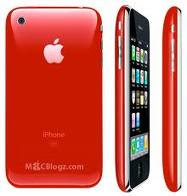 Back in the dark ages of personal computing, if you wanted to look through the programs on your machine and, say, open a Microsoft Word document from the floppy drive, you would need to type a list of arcane commands that went something like this:
Back in the dark ages of personal computing, if you wanted to look through the programs on your machine and, say, open a Microsoft Word document from the floppy drive, you would need to type a list of arcane commands that went something like this:DIR *.EXE MSWORD.EXE
A:\REPORT.DOC
In an effort to win over less technical users, both Apple and Microsoft dumped that command-line interface for personal computers more than two decades ago, replacing it with visual icons for files, folders and applications. Over the years, they added animations and search technology and other features to make navigating a Mac or Windows PC even easier.
Yet all of the gloss and glitter doesn’t hide the fact that both operating systems are still pretty geeky and difficult for many computer users to navigate. I frequently get calls from family members asking why the font size on their Web browser suddenly changed or where they should look for the photos they have just downloaded from their digital camera.
I never get that kind of call about Apple’s iPhone.
The iPhone, although locked and frustratingly placed into a walled garden, is the epitome of simplicity. You control it by touching the screen — an intuitive interface that even a toddler can figure out. It’s virtually impossible to change key settings by accident. And if you do somehow mess things up, it’s a cinch to reset the machine back to its pristine, out-of-the-box state.
Why can’t PCs work that way?
There are, of course, all sorts of legacy reasons why the front-end design of computer operating systems is so complicated. Microsoft, for example, strives to make each new version of Windows familiar to customers of earlier versions.
But Apple’s iPhone and computer operating systems are both based on the Unix operating system. Why not use the iPhone interface as the basis for a new round of Apple computers?
And in Microsoft’s case, what if the company scrapped the front end of Windows 7 and the troubled Vista OS and moved to the new, elegant interface it is using for its Windows Phone 7 Series mobile phones? Would users really be upset?
From a technology perspective, the transition wouldn’t be as simple as copying the OS from the phone and pasting it onto a computer system, but it would give these companies the opportunity to simplify their computers and create commonality between the phone and desktop interfaces. And it would allow them to capitalize on the predicted mass migration of users from PCs to mobile devices.
Putting a simple and easy-to-use mobile OS onto desktops and laptops would limit errors by users and simplify existing file-based computing. Users wouldn’t be forced to figure out where their iTunes music sits or even have to learn separate operating systems for their phones and desktops.
To some extent, the industry is already moving in this direction of simplified operating systems. Google’s Android’s user interface, originally aimed at smartphones, is being used in the small, basic laptops known as netbooks. Apple is using the iPhone OS in its iPad tablet computer.
As Brian Chen of Wired predicted after Apple unveiled the iPad last month, “With the iPad and the horde of tablets that will follow it, we can expect computing to become much easier than what we’re accustomed to today.”
One of the big challenges to moving the iPhone or Windows Phone 7 operating system to personal computers involves the multitouch interface. Although Microsoft and Apple have been working for years to integrate multitouch into their respective operating systems, it’s not as easy as starting from scratch — especially for Mac OS X, Apple’s current computer operating system.
A former senior Apple engineer, who spoke on the condition of anonymity because of confidentiality agreements signed while an employee, explained that adding full multitouch to OS X would require a hefty redesign of many components in the code. “It’s one thing to add multitouch to a few applications, implementing the ability to pinch and zoom from the trackpad on the laptop with the Preview application,” the engineer said. “But it’s a whole different story if you want to implement these technologies on the desktop, or globally on OS X.”
An easier approach, the Apple engineer indicated, would be to add the iPhone OS as a layer on top of OS X, similar to Apple’s Front Row experience.
Another former Apple programmer I consulted pointed out that Mac OS X is a “kludged mess of code from past operating systems.” The programmer added that if Apple could start over with the desktop OS, it “would take into consideration that Google’s Android OS is going to look and work almost exactly the same on computers and mobile phones, and it won’t have a desktop feel.”
If Apple were to adopt an iPhone-like OS for its computers, developers would have to build applications for only one platform, the programmer said, and Apple could even extend the platform to Apple TV. “It’s like Apple has the opportunity for a do-over.”
Or at least a makeover.

0 comments:
Post a Comment